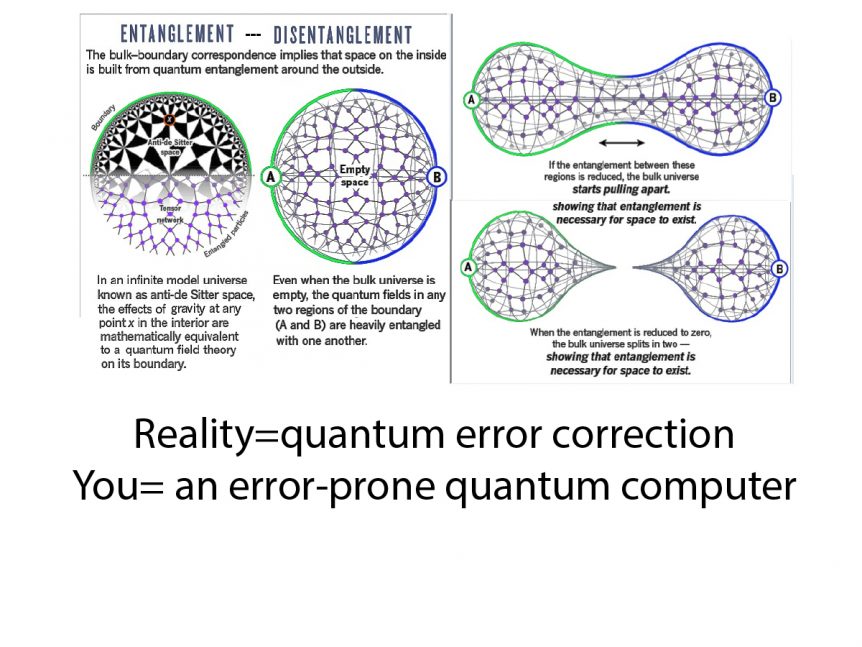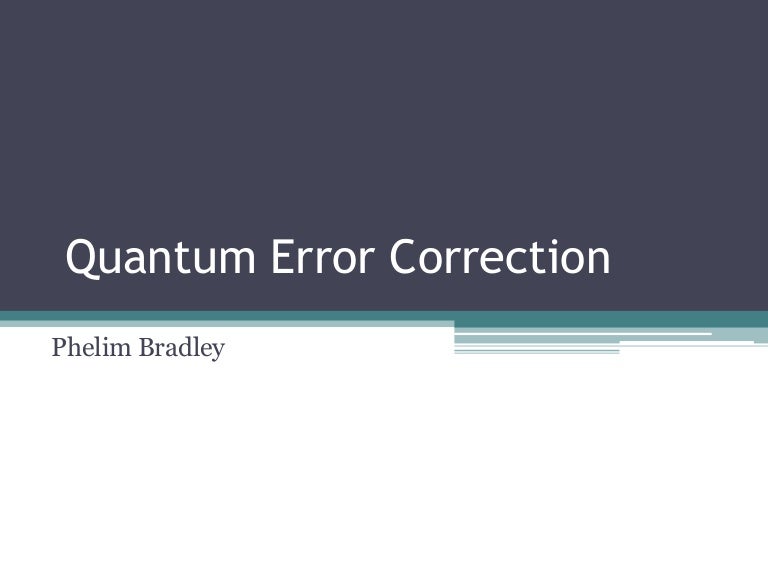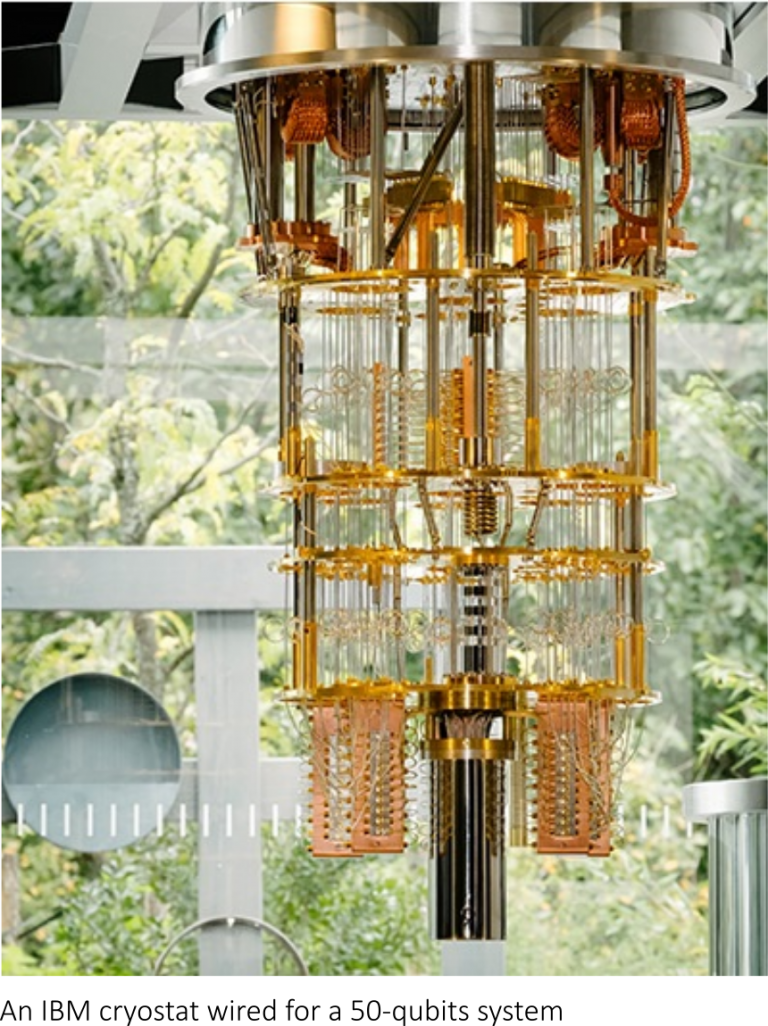

However, this is not possible with quantum information, as it cannot be copied: see no-cloning theorem. if, say, one copy says, the bit is a 0, and two others claim it to be a 1, then probably all three were a 1 and the first bit got corrupted. IntroductionĬlassical error correction employs redundancy: The simplest way is to store the information multiple times, and-if these copies are later found to disagree-just take a majority vote i.e. Quantum error correction techniques are methods to protect quantum information from errors due to decoherence and other noise. The syndrome measurement provides information about the error that has happened, but not about the information that is stored in the logical qubit-as otherwise the measurement would destroy any quantum superposition of this logical qubit with other qubits in the quantum computer, which would prevent it from being used to convey quantum information.Ĭonsider the situation in which we want to transmit the state of a single qubit \displaystyle can become inverted.[taken from wikipedia - needs major work) To correct the error, the Pauli operator corresponding to the type of error is used on the corrupted qubit to revert the effect of the error. The measurement of the syndrome has the projective effect of a quantum measurement, so even if the error due to the noise was arbitrary, it can be expressed as a combination of basis operations called the error basis (which is given by the Pauli matrices and the identity). In most QEC codes, the type of error is either a bit flip, or a sign (of the phase) flip, or both (corresponding to the Pauli matrices X, Z, and Y).
#ALEXEI KITAEV QUANTUM ERROR CORRECTION CODE#
Depending on the QEC code used, syndrome measurement can determine the occurrence, location and type of errors. It performs a multi-qubit measurement that does not disturb the quantum information in the encoded state but retrieves information about the error. Quantum error correction also employs syndrome measurements. An error can then be reversed by applying a corrective operation based on the syndrome. Peter Shor first discovered this method of formulating a quantum error correcting code by storing the information of one qubit onto a highly entangled state of nine qubits.Ĭlassical error correcting codes use a syndrome measurement to diagnose which error corrupts an encoded state. But it is possible to spread the (logical) information of one qubit onto a highly entangled state of several (physical) qubits. This theorem seems to present an obstacle to formulating a theory of quantum error correction. Similar to classical error correction, QEC codes do not always correctly decode logical qubits, but their use reduces the effect of noise.Ĭopying quantum information is not possible due to the no-cloning theorem. In this example, the logical information was a single bit in the one state, the physical information are the three copied bits, and determining what logical state is encoded in the physical state is called decoding. It is possible that a double-bit error occurs and the transmitted message is equal to three zeros, but this outcome is less likely than the above outcome. Assuming that noisy errors are independent and occur with some sufficiently low probability p, it is most likely that the error is a single-bit error and the transmitted message is three ones. Suppose further that a noisy error corrupts the three-bit state so that one of the copied bits is equal to zero but the other two are equal to one.

suppose we copy a bit in the one state three times. The idea is to store the information multiple times, and-if these copies are later found to disagree-take a majority vote e.g. The simplest albeit inefficient approach is the repetition code.

Quantum error correction is theorised as essential to achieve fault-tolerant quantum computation that can reduce the effects of noise on stored quantum information, faulty quantum gates, faulty quantum preparation, and faulty measurements.Ĭlassical error correction employs redundancy. Quantum error correction ( QEC) is used in quantum computing to protect quantum information from errors due to decoherence and other quantum noise. Short description: Process in quantum computing


 0 kommentar(er)
0 kommentar(er)
